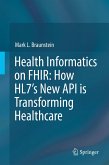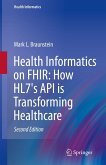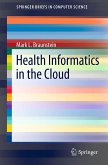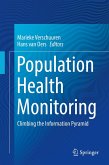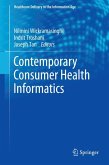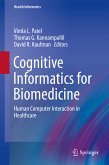"Dr. Braunstein has managed to take what is traditionally a dense and occasionally untranslatable topic and to frame it in an informal, conversational, and accessible style. Well done! The book begins with a carefully constructed and well referenced discussion about the healthcare system and the current regulatory climate developed to help transform it. The section on HIE is one of the most comprehensive I have seen...This book will be a terrific introduction to the field of clinical IT and clinical informatics, and is a welcomed addition to the materials we have as instructors in this field."
- Kevin B. Johnson, MD, MS is a Professor and Chair of Biomedical Informatics, Vanderbilt University Medical Center
"Dr. Braunstein has done a wonderful job of exploring a number of key trends in technology in the context of the transformations that are occurring in our health care system, andhighlighting how these trends are likely to both play out and influence the evolution of current and future health IT systems."
- Robert A. Greenes, MD, PhD, Ira A. Fulton Chair and Professor, Professor Biomedical Informatics, Arizona State University
"This insightful book is a perfect primer for technologists entering the health tech field."
- Deborah Estrin, PhD, Professor of Computer Science, Cornell Tech, Professor of Public Health at Weill Cornell Medical College
"Producing sharable digital data from care delivery and actually sharing it is arguably the single most important contribution health informatics can make to better healthcare in our country," is the way Dr. Braunstein starts this eminently practical yet very detailed look at what our country needs from the field of medical informatics. He has produced a minor masterpiece of analysis and explanation about the use of computers in medicine and health care delivery, one that is as useful for the informed lay person as it is for any clinical professional needing a brief overview of the field. This book should be read by everyone."
- David C. Kibbe, M.D., M.B.A. Director, Center for Health Information Technology, American Academy of Family Physicians, President and CEO, Co-founder DirectTrust.org
Dieser Download kann aus rechtlichen Gründen nur mit Rechnungsadresse in A, B, BG, CY, CZ, D, DK, EW, E, FIN, F, GR, HR, H, IRL, I, LT, L, LR, M, NL, PL, P, R, S, SLO, SK ausgeliefert werden.
"Braunstein (health informatics, School of Interactive Computing, Georgia Tech) presents an excellent, wide-ranging review of such systems. ... This volume will be useful for students of informatics generally as well as for those in the medical field. Summing Up: Highly recommended. Upper-division undergraduates through faculty and professionals." (R. A. Brugna, Choice, Vol. 53 (6), February, 2016)



